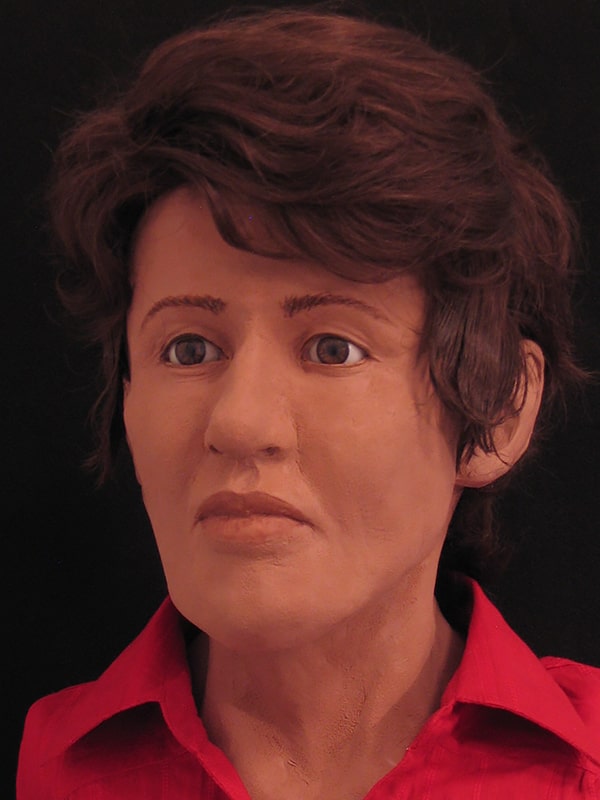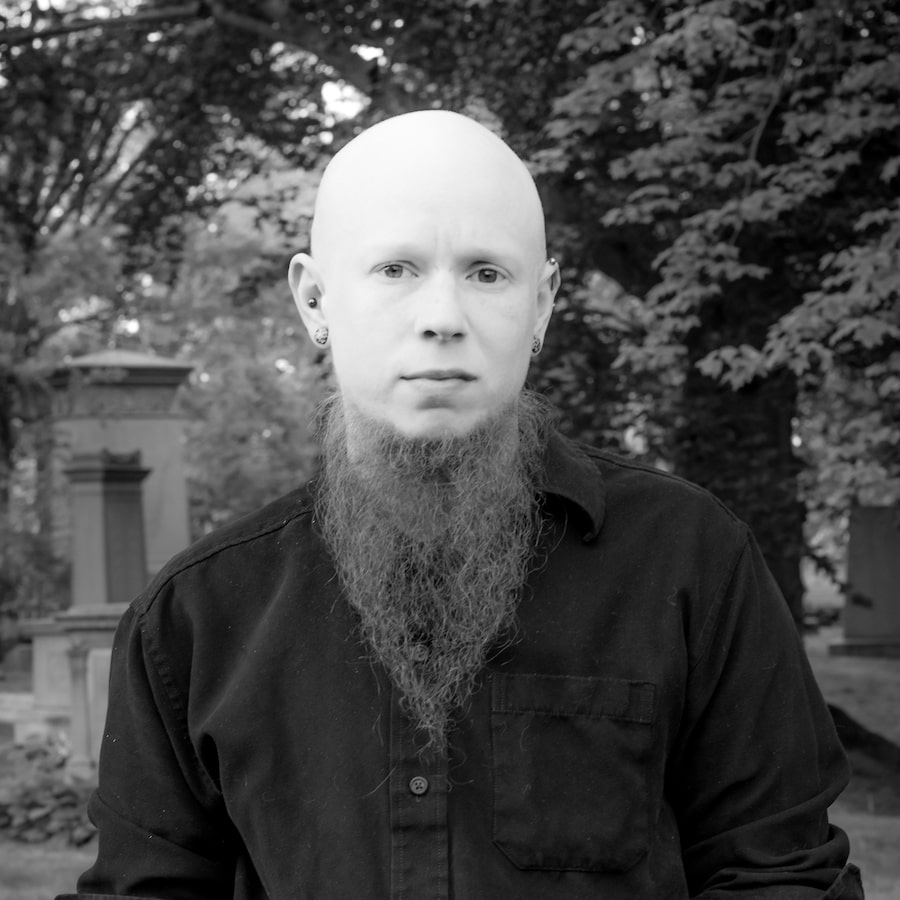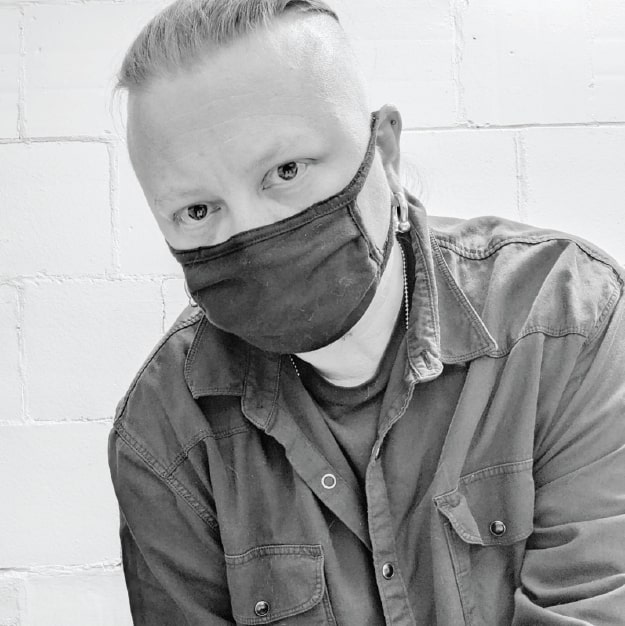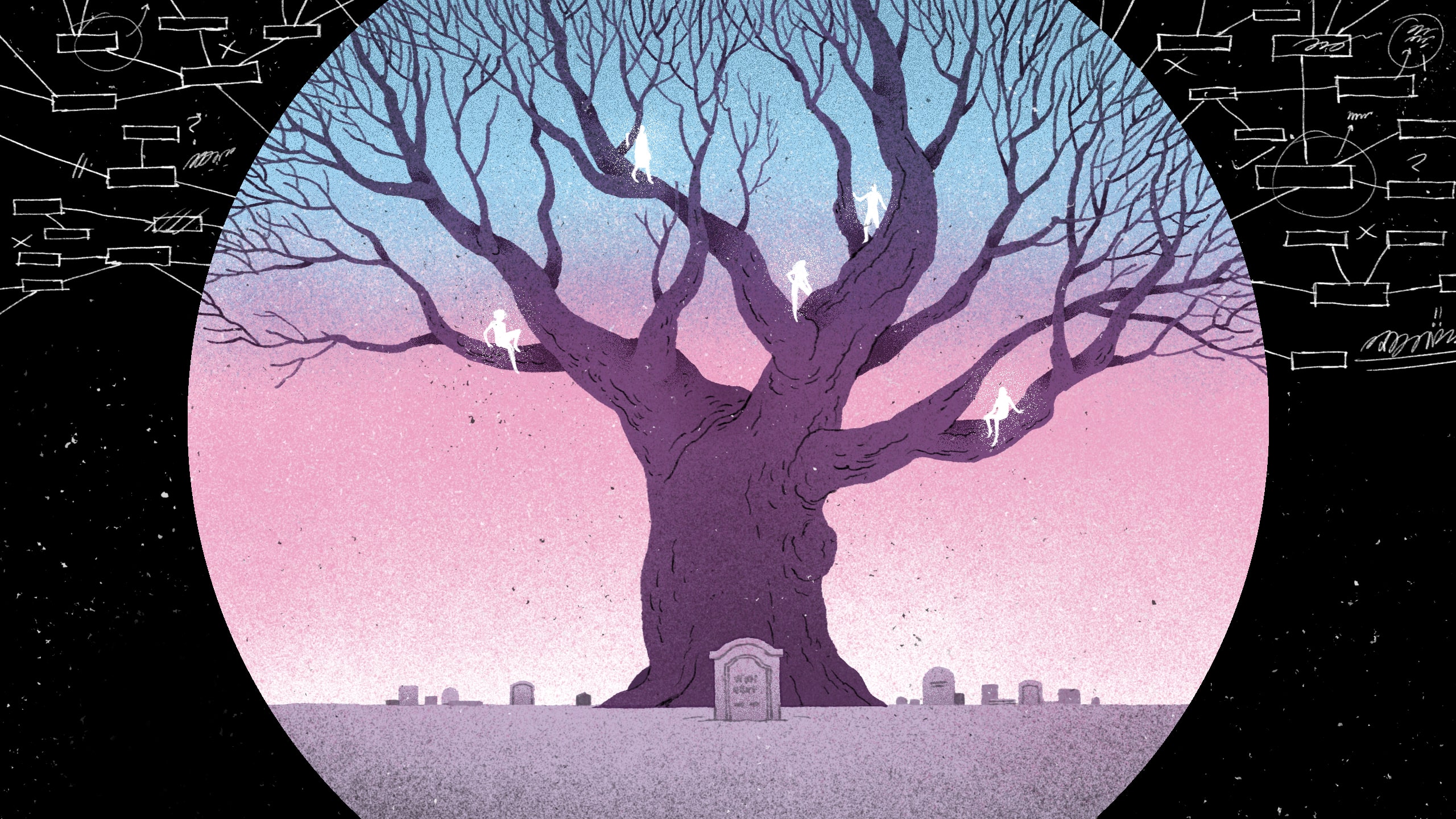Content warning: This story discusses violence and the deaths of trans people.
They found Markham Doe among the evergreens on the east side of 11th Concession, in Markham, Ontario, on July 16, 1980. It was a humid, rainy summer day. Doe had been there for a year, or two, or three, investigators presumed. Here, on this stretch of rural road northeast of Toronto, thousands of cars zoomed past; no one had found them. Not until a motorist took a pit stop that wet, July day and came across their skeletal remains.
Investigators with Ontario’s York Regional Police Service found that Doe’s remains bore few clues to their identity. While it’s likely they were a trans woman, cold case files continue to gender them male due to biological skeletal markers. (I’ve opted for they/them pronouns to respect their unknown gender identity.) Markam Doe wore a red blouse, white frilled socks, Brittania-brand jeans and a pair of red, possibly pink, high heels with bows on top. Their hair ran down to the back of their neck, chestnut brown and moppish. Stains on their teeth suggested they may have been a smoker. In an artist’s rendering based on forensic evidence, Doe sits, legs crossed; in another, they stand, hand in pocket. They would have been roughly 5 feet, 6 inches; they were young when they died, just 20 or so. As far as police records show, no one came forward to report them missing, or to claim them after their remains were found.
It was a time when rights and visibility for LGBTQ2S+ people were especially precarious. It was a little more than decade since Compton’s Cafeteria Riots in San Francisco and the Stonewall Uprising in New York, and a year before the mass demonstrations following police raids on Toronto bathhouses. Trans people had few official protections or support services. Susan Gapka, a Toronto trans activist who came out about a decade after Markham Doe’s death, recalls that the threat of violence against the community was so severe it persuaded her to stay in the closet. Many trans women turned to sex work to survive, but were frequently criminalized, harassed by police and subject to violence; community members only had one another to lean on. Of the 1980s and ’90s, Gapka remembers hardship: “Trans people were often left behind,” she says.

Credit: Courtesy of York Regional Police.
In the 40 years since their discovery, no one has learned what happened to Markham Doe. York Regional Police Detective Douglas Clark says they may have been a victim of James Henry Greenridge, who was charged with the murder of a man in Toronto’s Gay Village a year after Doe’s body was found; but so far, no connection has been made. In 2009, police constructed a clay bust sculpture of Doe—their brown hair curling over their ears, large brown eyes wide open—in an effort to identify them. It either didn’t trigger any new memories, or else Doe’s friends remained reluctant to come forward. No other information about them or their death has since arisen; for now, they remain unknown.
The story of Markham Doe isn’t an uncommon one. Nor is it history. In 2017, 27-year-old Alloura Wells, a trans woman of colour, went missing in Toronto. While her remains were located in a park in August that year, police failed to identify her until late November, despite community members and loved ones’ active involvement in the police search for her. The mishandling of her case, along with the murders of eight men in Toronto’s gay village, prompted an inquiry into how Toronto Police manage missing persons cases, particularly when they involve the city’s LGBTQ2S+ communities.
Around the world, trans and gender nonconforming people are subject to disproportionate violence, often leading to death. Some research suggests a trans person is murdered every three days globally, and that’s a conservative estimate. And when they are killed, their cases often fall under the radar—or, if they are pursued, those cases remain especially difficult to solve. Some folks, estranged from their families of origin because of their gender identity, are never identified at all. Many are misgendered in death, leaving their chosen families unable to find them, either. Some trans folks, pushed to the margins of society in life, go unidentified for decades in death.
South of the border, one couple is making an effort to keep their memories alive. Anthony Lukas Redgrave and his spouse, Lee Bingham Redgrave, started the Trans Doe Task Force (TDTF) in 2018. The TDTF is a small non-profit based in a small town called Orange in western Massachusetts, that works to identify trans and gender nonconforming Doe cases that have gone cold.
The Redgraves, who are both trans, got their start organically: they wanted to solve some personal mysteries. Lee, 41, was adopted, and they wanted to find their family; DNA and ancestry tests were their best bet. Anthony, 38, was a creative writing major whose passion for unresolved mysteries led him to pivot into forensic genealogy. When I first phone the pair from Toronto in May to talk about their work, they chat with me like old friends for more than an hour. But first, they offer their apologies: “We sound nearly identical,” Lee says in the same hum as Anthony’s voice. “It’s okay,” they assure me, “most of our comments are interchangeable, anyway.”
What began as the couple’s hobby of researching cold cases led to work as volunteers with the DNA Doe Project; by 2018, they had helped solve a dozen Doe cases. They also started their own company to provide private genetic genealogy services, Redgrave Research Forensic Services. One of their most high-profile breakthroughs: identifying the murderer of nine-year-old Toronto girl Christine Jessop, whose case had remained cold for 36 years. Jessop’s neighbour was wrongfully convicted of the crime, and was later exonerated in 1995; the Redgraves’ work helped identify Jessop’s real killer.

Credit: Courtesy of Redgrave Research
For years, the Redgraves, who were part of a small LGBTQ2S+ community, had kept to themselves. (“We’d kind of become hermits,” Lee says.) But then one of their good friends, a trans activist named Christa Steele-Knudslien, was murdered by her husband. (He confessed to the crime in 2018 and was sentenced to life in prison last year.) Anthony and Lee hadn’t seen Christa in years, save for the occasional social media post, and her death came as a blow to them and other local trans people—Christa was the founder of the Miss Trans New England pageant and an organizer of the New England Trans United Pride March and Rally. The pair felt compelled to do something for the community: they decided to merge their genealogy experience and lived experience to help solve cases involving trans people.
Working with a small team and a few interns, they use genetic genealogy to trace the identities of the missing and murdered. It’s a calling for the couple, sifting through DNA records and building virtual family trees that span across their computer screens. “We realized, ‘Wow, we have to look for trans cases now that we know that we can do this,’” Anthony says. “We can use this technology to identify some of our own.”
Comb through a map on the TDTF’s website and you’ll find dozens of cases from around the world of trans or gender nonconforming people who have died and remain unidentified. Each case is marked with a tiny coloured dot; the dots span the globe—some in clusters, some as alone as an island. Each dot represents a life cut short, a name forgotten, an unimaginable loss. But when police trails go cold, the TDTF team keeps these people front and centre. To date, TDTF is tracking 173 unresolved cases; Markham Doe is one of them.
Resolving any Doe case is, at its core, about restoring dignity to the dead. But that is especially pertinent in cases of trans and gender nonconforming people, who are routinely harassed, sexualized, overpoliced and dehumanized. The TDTF’s work is also about restoration, righting the historical wrongs of institutions that have overlooked trans people. It is not easy work, but the Redgraves consider it necessary. If we want to begin the process of undoing decades of harm that systemic transphobia has caused, they say, this is one painful but crucial place to begin.
In the early morning of Nov. 26, 1983, the remains of a young person were found on Pillar Point Harbor Beach, in the coastal county of San Mateo, California. They were in their late teens to early 20s, likely a trans woman or gender nonconforming person, and they had been brutally beaten, stabbed, strangled and left for dead. A passerby found the body mere hours after the murder. And yet, until the Redgraves decided to investigate in the fall of 2018, the case had gone cold.
There were a number of reasons law enforcement missed the mark. For one, police identified Pillar Point Doe as male in their reports, despite the fact that they were dressed in women’s clothing (a multicoloured turtleneck, brown pantyhose, a bra). For another, law enforcement’s artist renderings of Pillar Point Doe varied wildly—each portrait looked like a completely different person. That could be, in part, because of the injuries they sustained during the assault. But the Redgraves believe it’s more likely because the person identified outside of the gender spectrum—perhaps portrait artists, who weren’t part of the LGBTQ2S+ community, didn’t know how best to represent them.
Law enforcement often don’t know how to handle cases involving queer and trans victims because they don’t understand the systemic issues that cause violence. Making matters worse, research suggests trans people are four times more likely to experience violent crime than their cisgender counterparts. And that level of violence is systemic and rampant, says Mark Lee. In a previous collaboration with American LGBTQ2S+ organization Human Rights Campaign, Mark Lee helped pen a groundbreaking report on trans violence, exploring the social determinants and external factors that play into anti-trans stigma.
The report pointed to myriad factors that lead to that violence: a lack of access to employment, education, shelter, aid and other resources that often leaves trans and gender nonconforming people disadvantaged. (Even more barriers exist for trans women of colour, who are affected by both racism and sexism in tandem with transphobia.) Many trans folks end up in sex work, which is criminalized, stigmatized and, consequently, often unsafe. That stigma also trickles down from hostile political climates, Lee adds—look no further than the dozens of U.S. states that tabled anti-trans legislation this year alone.
“When people from our community go missing, it means nobody is looking for them, and that is horrifying. If they don’t have family, we are their family. Who cares? We care.”
All this should leave us unsurprised that violence toward trans people often goes unresolved. “When people from our community go missing, it means nobody is looking for them, and that is horrifying,” says Jessi Veltstra, a forensic genealogy intern and volunteer with the TDTF. “If they don’t have family, we are their family. Who cares? We care.” Veltstra, who is cis and bisexual, feels the loss of each missing trans person personally. Sometimes, while trying to identify a Doe case or find a missing person, Veltstra will print out photos and hang them in her home. It’s her way of welcoming the Does into her own chosen family. “Everyone deserves to have someone looking for them,” she says.
In the case of Pillar Point Doe, Anthony and Lee were among the first to start looking. Those bungled artist renderings were part of what drew Lee to the case. “As an adoptee, I have a fascination with faces, because no one looked like me when I was growing up,” they say. For Anthony, it was the mystery behind it all: How could police not identify this person, who was found just hours after death and couldn’t have been taken far from where they were picked up and slain? As queer and trans people, Anthony and Lee imagine the disconnect between police and the community had something to do with it. Pillar Point Doe was killed not long after the AIDS epidemic began and not far from the site of the historic 1966 Cafeteria Riots near San Francisco; it’s not a stretch to think LGBTQ2S+ people weren’t keen to co-operate with cops.
Anthony and Lee began digging into the case shortly after TDTF was founded, in conjunction with the DNA Doe Project. The TDTF knew that police collected a blood card the night Pillar Point Doe was found—a tiny square of water paper that soaks up blood and can be used to provide a sample of DNA. The co-founders of the DNA Doe Project had connections with the San Mateo police department. So, they asked: Might detectives be willing to send that sample to a lab for further investigation?
The pair suspect that, likely high off the success of nearby California police using genetic genealogy to identify the Golden State Killer, the San Mateo detectives were willing to co-operate. So, in May 2019, Anthony and Lee received a DNA kit from the lab providing the data needed to begin finding Pillar Point Doe’s next of kin. The pair used a service called GEDMatch, a database containing DNA samples from those who have their ancestry tested with services like 23andMe or Ancestry.com. From there, “it’s like a giant sudoku puzzle,” Lee says. The couple used Pillar Point Doe’s DNA to find the nearest genetic match—a fourth to sixth cousin—and then they started building out that cousin’s family tree.

Credit: Courtesy of Redgrave Research
Tracing back through generations, the tree’s trunk was rooted across the pond in Wales; its branches stretched out toward America, into a religious community in Utah. The latter presented some complications: because there was a lot of intermarriage within the community, the DNA sample size became smaller and smaller, thinning the branches and making it difficult to narrow down matches. They persisted, entering names into spreadsheets and branching each match further and further out, generation by generation—from a seed into a giant sprawling tree.
About four months into the search, the branches began to thin; the pair knew they had to be close. Their work grew frantic: “We both just stayed up every night until the sunrise trying to do this research,” Lee says. “We knew if they had a shot at being identified, it was through us.” They kept searching ancestry databases for photos, clues. When he did sleep, Anthony had nightmares of Pillar Point Doe. They were trying to tell him their name, their lips moving, but Anthony was always out of earshot, never quite catching who they were.
Then, a standstill: there were no new names surfacing. After all their work, could they have missed their Doe in that sprawling family tree? Anthony began going back, clicking through the names they had found, looking for relatives who had yet to be identified. At 4 a.m. one night, a name stood out: the person didn’t have a date of death listed. Anthony began searching, clicking back and forth through images. A high school yearbook photo popped up; Anthony clicked past it. But Lee urged him to go back—their fascination with faces gave them pause. Wide hazel eyes, high cheekbones…
The face was a match to the crime scene photos, they were sure of it. Anthony began to cry; Lee’s arms tingled with goosebumps. They’d finally identified Pillar Point Doe.
The rest of the work is up to the San Mateo police department, which has been given the identification of Pillar Point Doe. They’re in charge of contacting next of kin, and should they come upon more evidence, they can reopen the murder case. For Anthony and Lee, it’s bittersweet: they don’t know how this person wanted to be identified; it’s not even known if the discovered name was the name they used in life. “It’s hard to know how to memorialize them,” Lee says. “I definitely don’t feel like I’m done,” Anthony adds. But after endless nights searching for their identity, “Pillar Point became our family. We adopted them.”
Not every case offers closure. In fact, successfully identifying a Doe case is a rarity; the TDTF has so far solved just two. Even still, there are likely more cold cases that researchers have yet to find. That’s especially true in Canada: in 2002, B.C. serial killer Robert Pickton claimed he was responsible for the deaths of at least 49 women, many of whom were Indigenous and were not identified; he was formally charged for the murders of 26 women. And in 2018, Toronto serial killer Bruce McArthur was charged with the murders of eight men; some men were not reported missing by their loved ones, and at least one man’s remains were unidentified until police appealed to the public for help. When it comes to LGBTQ2S+ missing persons, “We are the vulnerable, the forgotten ones,” Susan Gapka says.
Databases from different regions also often fail to report their cases to larger national ones, and that’s where marginalized people fall through the cracks. If roughly 80,000 people go missing in Canada every year, at least 4,000 of them would be LGBTQ2S+ based on demographic research; about 48 of those cases would include trans people. But so far, TDTF has only been able to pinpoint five Canadian cases on their map. One of those is Markham Doe.
Back in Toronto in the 1980s, Markham Doe’s remains were held at a coroner’s office, likely for years, as investigators continued to search for leads around their disappearance and identity. But, as time passed and the trail turned cold, the coroner eventually turned the remains over to Toronto’s Mount Pleasant Group to be given a proper burial. Ontario’s social services offered the cemetery a $1,000 stipend to cover the costs of burial and a simple grave marker. Because investigators continued to refer to them as male, Markham Doe was buried “John Doe (unidentified)” in 1983.
Doe’s final resting place is a large but peaceful cemetery in the centre of midtown Toronto. Mount Pleasant Cemetery has been in operation since 1876; the site is so old that the city later constructed Mount Pleasant Road between it, splitting the cemetery in two on the west and east sides of the street. It’s home to the graves of former prime minister William Lyon Mackenzie King and renowned pianist Glenn Gould. But toward its east end lies a handful of Doe graves—unidentified people who were never claimed by friends, family or loved ones. That’s where Markham Doe lies.
On a humid June weekend, not so different from the day they found Markham Doe’s body, my partner and I headed to the cemetery. It’s not far from our midtown Toronto apartment. We rode our bikes through trails, passing meticulously culled evergreen trees and flower gardens. And then we stopped at Section 47, searching the gravestones for Lot 1304. That, a representative from the cemetery told me, is where we would find Markham Doe. We paced to and fro, passing bunches of flowers left for those identified and buried, likely in elaborate final ceremonies—but there was no grave to be found.
Twenty minutes later, we came upon a dimple in the grass, overgrown and covered with earth. I couldn’t make out a name or date on the stone beneath the mud. Could it have been Markham Doe’s grave? We were in the correct location, but the overgrowth made it difficult to know with certainty.
In the weeks since, I haven’t stopped thinking of Markham Doe. They would have been around my age when they died. Who were they? What was their favourite food? Did they like to dance? Were they happy?
TDTF’s Jessi Veltstra says that’s common. It’s heavy work, and it can consume you. In our conversations, we exchange frustrations that it has to be this way, that our communities have to face such hardship in life and in death. But Veltstra knows the work is crucial; she says she feels privileged to be able to do it.
As for Anthony and Lee, they say the key is to try not to get too frustrated—or at least to turn the anger into something positive. The pair call themselves eternal optimists; despite such longstanding, difficult relationships between trans communities and the police, they continue to work alongside law enforcement to solve these cases. “We really try to offer people a chance to do some repair work with the community,” Anthony says. They’re in-house experts on LGBTQ2S+ cases, as Anthony puts it. They continue educating and reaching the masses—attending conferences, appearing on podcasts, hosting seminars with law enforcement. Anything to aid the work in identifying the Doe cases that have languished.
On that June afternoon at the cemetery, it pained me not to find even Markham Doe’s assigned name on a grave marker beneath the soil. Their grave had sunken into the ground, somewhere; I do not know whether we found it or simply passed it by.
Do you know a missing trans or gender nonconforming person? Contact the Trans Doe Task Force with details to help resolve more cases.


 Why you can trust Xtra
Why you can trust Xtra


